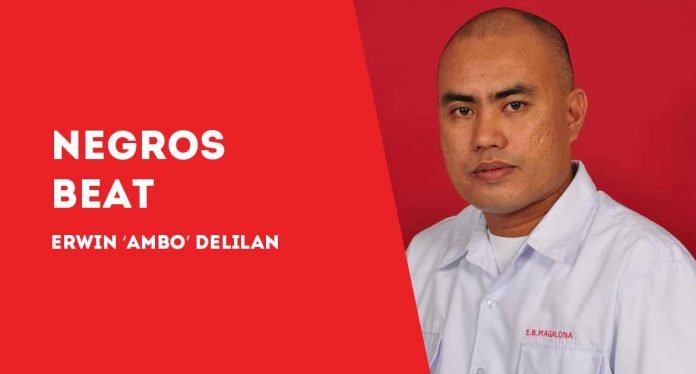
By ERWIN ‘AMBO’ DELILAN
THERE’S something new in Negros Occidental that could somehow help both the provincial government and the Philippine Army attain their genuine desire for lasting peace.
Enter the reed plant locally known as “tikog”.
A wild plant, tikog is endemic in Sitio Madaja, Barangay Buenavista, Himamaylan City.
Dubbed as “far away from civilization” (malayo sa kabihasnan), Madaja is known to many as a place that is “diyes sintemos na lang ang plete palangit”. It is so remote. No accessible road. It can only be reached by foot. So it’s no wonder why this sitio is popularly known as one of the “recruitment centers” of the New People’ Army (NPA).
But believe it or not, there’s a “gem” in this “haven of the poor” slash “rebels’ lair” – the tikog.
Indigenous peoples (IPs) there used tikog leaves in weaving simple mats. Then they sell them in a nearby sitio in the Oriental side of Negros Island “sa barato lang nga presyo.”
When operatives of the Army’s 94th Infantry Brigade (94IB) did a random visit to the place, they were attracted by the finished tikog products.
The soldiers shared this to the 94IB commanding officer, Lieutenant Colonel Van Donald Almonte who, in turn, bought some pieces and used these as their sleeping paillasses and ceilings in their barracks.
Almonte said of tikog products: “Medyo malayo ang mararating nito kung tutulungan lamang natin.”
“The raw materials are there already, the weaving execution is near superb. What the Madaja natives need are support for the sustainability of producing mats, and the marketing of their products,” he added.
Almonte referred such to his boss, Brigadier General Inocencio Pasaporte, commanding general of the 303rd Infantry (Brown Eagle) Brigade.
After a moment of brainstorming, the final resolve: refer them to the Association of Negros Producers (ANP).
Sans hesitation, the ANP, with the help of the Army, sent somebody to Madaja to check the quality of the products, including the availability and sustainability of the raw materials.
Then, mentoring followed to see to it that the products meet the qualification standard (QS) of ANP, a known marketer and exporter of Negros handicrafts, among others produce.
The rest is history.
‘PSYCHOLOGICAL BARRIERS’
Sybel Nobleza, ANP external affairs manager, reported recently that tikog weavers from Madaja have started reaping. From P15,000 income in July, it doubled in August.
From mats, they, too, explored weaving placemats. Then, in the recently-concluded 36th Negros Trade Fair in Glorietta 2, Makati, tikog mats and placemats also took center stage.
Organized by the ANP and with the support of the provincial government, the week-long fair (September 19-25) raked a “super income” in millions of pesos.
General Pasaporte is thankful with the ANP for helping the Madaja IPs. The Army general stressed, “It’s like hitting two birds with one stone.”
“First, with ANP, we helped the Madaja people to have sustainable livelihood and income and, at the same time, gradually convert them as ‘psychological barriers’ against NPA’s massive recruitment.”
Likewise, ANP’s Vice President for Advocacy Mary Ann Colmenares said they’re so happy and elated that, for the first time, ANP was included in the Peace and Order Committee (POC) of the province.
“With this and through the Army, we’re able to discover lots of potential products in the hinterlands of Negros,” Colmenares told the covering media at the trade fair in Makati.
FOR VIP, TOO
Himamaylan City’s Vice Mayor Justin Gatuslao, on the other hand, said he also gifted former Vice President Leni Robredo with tikog placemats made from Sitio Madaja.
“Yes, the placemats look native but so classy and dainty,” the vice mayor vividly described.
Really, VM Gastuslao proved, such are really suited to be used as “matchless gifts” for very important persons (VIPs).
Himamaylan City’s Mayor Raymond Tongson, on the other hand, vowed to find ways how to further extend help to the Madaja tikog weavers.
Fifth District congressman Dino Yulo, in a previous interview, also vowed to construct more artillery roads, especially in far-flung villages in his district.
Himamaylan City belongs to the 5th Congressional District of Negros Occidental.
Meanwhile, in an interview with “Ang Probinsya Subong” program over Radyo Negrense, Madaja residents Wilme Garlet and Reynaldo Mordinio said, “Pasalamat gid kami sa Army nga nabuligan kami nila.”
Both admitted that, before, they’re not keen on weaving tikog leaves.
“Pang-uling (charcoal making ) man lang amon naka-hiligan. Maghimo lang kami banig tag-isa lang kabilog para ibaligya. Tapos wala na.”
But with the ANP guiding them and doing the marketing of their products, Manong Wilme and Reynaldo said they’re “more than inspired” now.
Asked point blank if they’ll be tempted anymore to join the NPA forces, both swore: “Dili gid gyud!”
A MATTER OF TIMING
Tikog is copious in Sitio Madaja. Maybe it’s God’s bounty for the IPs there. But the IPs’ generic knowledge how to make its leaves profitable is just limited. They don’t even know that tikog is also best to use for thatching.
Wikipedia says thatching is the craft of building a roof with dry vegetables such as straw, water reed, sedge, rushes, heather, or palm branches.
Nonetheless, Negros is so thankful to the Army for such a surprising-slash-interesting discovery.
It might be “prosaic” to say that there’s Divine intervention in between.
Just imagine that with this “tikog revolution”, it ain’t far that this rebels’ lair will soon become a “point of interest” because of its indigenous yet world-class and high-quality mats and placemats.
Last week, tikog invaded Makati, tomorrow it might also conquer the world./PN

